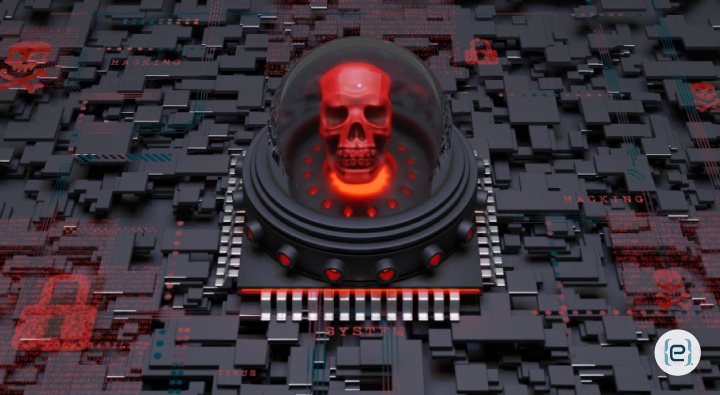How to Detect and Prevent Malware on Your WordPress Website


Cyber Security maintenance is essential for small businesses that depend on their WordPress websites to generate revenue. Malware continues to be the most persistent and subtle danger that can harm your website. Monitoring and proactive measures are necessary for malware detection and prevention. In this article we will cover many essential security techniques for WordPress websites – using robust security plugins, conducting routine scans and upgrades, and more. By using these methods, malware dangers can be successfully reduced, and one’s online safety can be well-maintained.
What is Malware?
Malware is software designed primarily to harm, interfere with, or violate computer users’ privacy. Common malware includes worms, ransomware, trojans, spyware, adware, rootkits, and keyloggers. Though different in their operations, each weakens your system’s defense mechanisms. When malware finds its way into your WordPress site, you are in trouble, because your data could be hacked, your site is opened to lurkers, and you lose operational functionality.
How to Detect Malware on Your WordPress Website
Identifying the malware immediately is the best way to prevent maximum harm. Here are several methods to identify if your site has been compromised:
Scan Your Website
To enhance your WordPress security, you can use Security plugins such as Wordfence. One of its features is scanning a website for known malware and suspicious documents. They alert you to real-time threats and provide detailed information on your site’s security.
Check for Unauthorized Changes
Ensure you regularly monitor your WordPress files and database for unauthorized changes from suspicious users, or for malicious software. Look for any unfamiliar files or alterations that could compromise your site’s security. Use FTP clients or your web host’s file manager to review your website’s files without downloading them. Additionally, verify that all user accounts are legitimate and recognized by your system.
Monitor for Suspicious Activity
Filter your site’s logs to find suspicious data, for example, access with many wrong login attempts or other unusual requests. Other plugins, such as activity logs, can assist in logging all the activities on the website with an analysis of security threats.
Inspect for Unfamiliar Plugins and Themes
Viruses can sometimes lurk within themes and plugins, especially if downloaded from unauthorized sources. Regularly inspect your installed plugins and themes for any unfamiliar or suspicious elements. Remove any plugins or themes that are questionable or unused across your websites to reduce potential vulnerabilities.
Review File Permissions
Confirm that your WordPress files have the correct permissions to prevent unauthorized access. Setting appropriate file permissions is crucial to safeguarding your site against potential security risks.
How to Prevent Malware on Your WordPress Website
Indeed, it is better to avoid problems and complications resulting from malware infections than to constantly fix the issues. Here are essential measures to secure your WordPress site:
Keep WordPress Core, Themes, and Plugins Updated
Regular updates are essential to patch security vulnerabilities that hackers exploit. Always ensure your WordPress core, themes, and plugins are up to date, especially if they are accessible online. Enable automatic updates to safeguard against emerging threats.
Use Strong, Unique Passwords
Make sure all the accounts that are accessible by the users, particularly those having privileged access, are password protected in the best way possible. Passwords should also be changed occasionally and not be the same for various sites. One possibility is introducing password managers, such as WatchGuard AuthPoint, that would generate and remember user passwords.
Regular Backups
You should regularly back up your WordPress site to avoid spending hours cleaning the infected site. Using reliable backup plugins, such as All-in-one WP Migration is advisable. It is recommended to store your backup files in different locations — for example on a web server and on your local computer.
Restriction of user access and their permissions
Ensure that the users have the correct roles and permissions assigned to them. Restrict administrative privileges to a select number of people and review users’ roles periodically. This reduces the likelihood of random changes and possible security intrusions.
Enable Two-Factor Authentication (2FA)
Use the two-factor authentication, since it increases the security of an account. Some plugins are available on the internet, such as Google Authenticator or Duo, which can easily be integrated with WordPress. To log in, they follow a two-step verification identity protocol, rather than just the password.
Secure Your Login Page
Strengthen your login page by masking its default URL to a different one. To mitigate the risk of brute force attacks, you should limit the system’s login attempts, and use reCAPTCHA to block any automated attempts.
Utilize a Web Application Firewall
A Web Application Firewall is a guard to your website, because it analyzes and inspects all HTTP communication between your web application and the Internet. It can prevent threats like cross-site scripting or SQL injection. Such solutions offer full-scale protection for the WordPress-based website.
Disable File Editing
As stated earlier, WordPress permits administrators to alter the modifiable theme and plugin files through the dashboard by default. This feature, if disabled, can help protect one from embedding malicious code through the usual editor.
Identifying and stopping malware, before it infiltrates your WordPress website, is critical to Website security. Applying the given detection and prevention methods can significantly lower the rate of contracting malware to a minimum level. Contact eMazzanti today, and we can offer assistance securing your WordPress site or addressing any other IT security concerns.
Recent Posts
Server Simplified
At eMazzanti Technologies, we recognize that stable, effective, and expandable servers are essential to the seamless operation of enterprises. For this reason, we collaborate with Hewlett Packard Enterprise (HPE) to offer our clients the best server solutions possible, customized to meet their unique requirements. HPE servers provide the performance and flexibility required for small and big businesses to manage data, support apps, and manage workloads with ease. Customers may choose the best HPE servers for their organization with the assistance of our team of specialists. We take the time to comprehend the particular needs of every client, including those related to processing speed, storage capacity, and security features. Whether our clients require a general-purpose ProLiant server or a…
How to Make Your AI Copy Sound Authentic: Writing Like a Human, Not a Machine
AI writing tools have become popular for creating content quickly. But many readers can spot…
Data Analytics for Old-School Business Owners: Turning Dusty Ledgers into Gold Mines
Data analytics is changing the game for businesses of all types, including old-school industries that…
Windows Snipping Tool Tips and Tricks: Mastering the Art of Screen Capture
The Windows snipping tool is an extremely convenient utility for capturing screenshots quickly. It serves…
Harry Potter with a Lightsaber: A Wizard’s Guide to Space Magic
What if Harry Potter swapped his wand for a lightsaber? Explore the hilarious and chaotic…
Cold Bot Attacks
Automation and artificial intelligence have transformed our digital lives and delivered immense convenience but also poses new…


